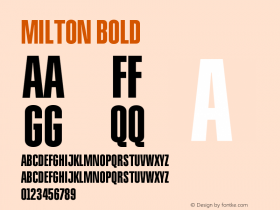
Fortunately it only happens rarely, but after my ScreenFonts series. Some are positive, some are… errr… somewhat less. Granted, rants about lazy or ill-inspired designs can be entertaining to write and read, yet I will never miss to point out and praise successful, innovative, or simply beautiful posters. Case in point: this episode is bookended with gorgeous designs, and in between there's more than enough positive reviews. So I do hope these over-sensitive nincompoops stop whining and get on with their collective lives. It's entertainment, fer chrissakes! : P
And on that note, let's take a look at which eye candy the movie theatre lobbies had to offer last month.
Like I wrote in the introduction, the movie poster for For Ellen is gorgeous; a poetic and dreamy design for a film with a rather difficult theme. The colour flare in the bottom right hand corner of the image – possibly inspired by the current Instagram filter craze which I also joined on Unzipped – produces a lovely spectrum ranging from pale yellow to deep purples and blueish greys. Having the movie title below the photograph knocked out in the pristine white border causes a waterfall of rich hues to spill into the heavy slab serif letters of Christian Schwartz's Stag. Because all the type is positioned at the bottom of the design the image remains mostly untouched, save two discreet film festival logos in the upper right hand corner. The result is a serene, airy and wonderful poster.
It may seem like a no-brainer to render the portrait of lead actor Bradley Cooper with actual words, but nevertheless the concept for this typographic alternate poster for The Words is well-executed. The different type sizes give the high-contrast image a nice texture, and the size and density of the type in relation to the image is very well balanced. I don't recognise the compact bold sans. The wobbly outlines and the lack of overshoot in the "O" tell me it was inspired by wood type – that last fact was something I learned only two weeks ago thanks to Indra Kupferschmid's enlightening presentation at Type Amsterdam 2012. FontShop's wood type offerings just got expanded with the addition of the first Hamilton Wood Type font family this week. By the way, am I the only one who discovered a dragon's head in the top of his hair?
The main poster is far less memorable mainstream fare and features the classic Bembo for the movie title.
Next up are two very nice illustrated posters. The first one is for German crimedy (did I just coin my own movie genre catchword? ; ) Snowman's Land. The movie poster was made to look like a three-dimensional cut paper illustration. The almost monochrome light blue image punctuated with dark red foot marks in the snow doesn't look like anything else out there for the moment and is sure to make this fun poster stand out. If not for the gun and the bloody footsteps one could mistake this for a stop motion animated feature for children. The typography is very basic – Morris Fuller Benton's 109-year-old condensed sans Alternate Gothic, still a favourite with many book cover designers.
The second one is the movie poster for Francine, featuring an illustration by Michael Gillette. This British visual artist helped to describe and define the characters and sensibilities of British pop. As English singer, guitarist an now painter (best known for being the lead singer of the now defunct band Elastica) Justine Frischmann explains on Michael's website:
His work is a celebration of the fragmentary and jumbled nature of populist culture from the last half century, synthesized into something that is always cheekily seductive and often heart-wrenchingly beautiful.
The painting strikingly externalises the emotional state of the lead character – a lost soul attracted to similar strays in this very stark film – more efficiently than any photograph possibly could. All text is scribbled in quick, natural handwriting, a fitting typographic solution.
Paul Thomas Anderson's latest film The Master comes with two posters designed by long-time collaborator Dustin Stanton, whom I had the privilege to briefly interview. Stanton met Paul during post production for his epic ensemble cast film Magnolia, and they've had a great working relationship ever since then.
I've had the honor of designing nearly everything from soundtracks, newspaper campaigns, special screening invitations to posters, academy ads and beyond for all of his pictures. I'm so grateful that the studios' marketing departments let that relationship happen. Harvey and his team have been really great to work with on this film.
The movie poster above is meant to be a teaser, a bit of a formal announcement for the film mostly for a broad market.
Since both the military and liquor are elements in the story of The Master, I looked for an appropriate image that would incorporate both. I began looking at old and new liquor bottle labels and realized that they can have a great marriage of masculine and feminine qualities. The title is a military font, something that could be painted on the side of a ship. At one point, I was happy with how the type was working but something was missing. There was no context for it. I remember taking some time and playing with the type in various ways. Paul and TWC were being very patient. I made a conscious decision that I wanted to make a poster that would hang comfortably on the wall next to the teaser poster for There Will Be Blood – something that felt "real". That led me to photographing the typography in a real situation.
The military font is the freeware font Amarillo USAF; the other two typefaces are Garamond and Bickham Script.
This design is a hand printed poster or, essentially, a lobby card that we came up with for the 70mm pop-up screenings. We wanted it to feel special and unique for the folks that were coming out for those screenings, something that harkens back to days of an earlier cinema experience, as if the film were released in the late 50s, early 60s. Also, I wanted a good reason to use Belwe Bold (laughs). I guess you'd have to see the film to understand the use of that exact Rorschach image; it makes more sense after that. The idea is just that these two characters are two sides to the same coin. They have such a symbiotic relationship, and the Rorschach ink blot just seemed to echo that concept.
Argh, what a missed opportunity! Let's me start by saying there's nothing intrinsically wrong with the movie poster for Dredd. It has the appropriate level of testosterone, and Judge Dredd posing on the corner of a rooftop against the backdrop of a burning city, half in ruins, looks pretty bad-ass. But if you're a comic buff like me, you know very well that Agency – the popular choice for action movies – is not the correct typeface. In the nineties Rian Hughes was commissioned to design a typeface for 2000AD, home of Judge Dredd. In fact many of the faces by the successful British graphic designer, illustrator and type designer were created for specific design commissions, and often their application or the circumstances of their conception can be deduced from their names. This custom typeface for Judge Dredd for example became commercially available under the name Judgement. It is a deliciously chunky, faceted display sans with military overtones, and comes in a variety of additional condensed and three-dimensional styles. And it would have fitted this poster perfectly.
A lesser-known fact in typographic circles about Hughes is that, besides creating numerous typefaces logotypes and trade dresses for comic books, he also illustrated comics for 2000AD, among others Robo-Hunter, Tales from Beyond Science, Really and Truly and Dan Dare. I highly recommend you look up his work if you haven't yet. His personable style is well worth discovering.
Whenever I see a succession of similar designs I think of Christophe Courtois and his theory that movie collaterals use a specific kind of visual shorthand to sell the films they advertise. This becomes quite obvious when you compare the movie poster for Solomon Kane with the previous one – the same threatening pose; the same half obscured face with hidden eyes; the same black, grey and red colour scheme; the same ominous clouds in the sky; but this time rain instead of fire. As this movie is set in the past, not the future, the futuristic square sans serif was traded for a calligraphic serif face with elegant swash extensions on selected letters. Although it is maddeningly close, I don't think this is Poetica, but I haven't been able to identify it.
Personally I prefer this illustrated alternate poster. I have tried to find out who designed it, but it was uncredited in every single mention on the internet (I went as far as tweeting Michael J. Bassett, the movie's director). Instead of going for imagery of the pulp literature this film originated from, it is more closely related to comic book art. The image of Solomon Kane riding his horse on a skull-shaped globe with its underside dripping with blood is beautiful, and suits this type of story perfectly. The three birds circling over Solomon Kane's head and the trees with a hanged man are nice details, adding extra depth to the mood of the poster.
Don't you just hate/love it when the Photoshop guy working on a film poster goes completely over the top and something atrocious/hilarious ensues? Judging from the movie poster Jennifer Lawrence gets assailed by head-hunters (the real kind, not the HRM variety) in House at the End of the Street, because her head seems to have dramatically shrunk in relation to her body. Unless she's been working out really hard and on the verge of hulking out.
As was to be expected for a recent horror thriller the movie title is set in Trajan.
Les Contes de la Nuit (Tales of the Night) has a lovely poster, full of vibrant colours contrasting with the black silhouettes and the night blue background. It's just a shame about the amateurish hand-lettered movie title that tries to mimic vintage penmanship. The letters are poorly balanced, and the character shapes look not very accomplished. Short of hiring a professional letterer, a well-built digital script would have done the job perfectly. For instance discover what the title would have looked like in any of the scripts from the Bluemlein Collection.
The lettering in the poster for Headshot is of a much better quality, with forceful strokes and a distinct rough texture like chalk or soft pencil on textured paper. As for the concept, sometimes you don't have to look too far. The film tells the story of a cop-turned-hitman in contemporary Thailand who literally starts seeing the world upside-down after having been shot through the head. And the poster does exactly what it says on the tin. Upside-down photograph of a head with scar, laser pointer aimed at the back. A no-brainer again, this time with apologies for the bad pun.
The main poster for Looper, Rian Johnson's sleeper hit sci-fi film starring Joseph Gordon-Levitt, Emily Blunt and Bruce Willis, is a little bit of a let-down. It is an adequate solution, with a professional yet rather generic image and tastefully letterspaced Gotham
The alternate posters however manage to visualise the premise of the movie in a much more interesting way. This alternate version juxtaposes the images of the young and the old incarnations of Joseph Simmons, the main character of the film, like a playing card. The disintegrating central area suggests the disappearance of the person in the future if his existence is erased in the past, hinting at the paradox of killing yourself in another point in the timestream.
That same paradox gets a slightly different treatment in this similar alternate poster, where the older incarnation of the main protagonist becomes visible through the fragmenting hole in the body of the younger one. Both these mainstream posters are quite clever and nicely realised.
Icing on the cake is this limited edition screenprinted poster, one of two new Mondo prints by artist Martin Ansin. Keeping with a major plot point in the film, two versions of this design were produced in metallic inks; a gold-coloured version and a silver one. It features a duplicate image of Joseph Simmons; the younger one about to kill his older self, the older trying to convince him otherwise. The interplay between the two images in alternating vertical bands is astute and produces a fascinating narrative. I also think that the end of the gun cut off on the left-hand side of the poster reappearing on the right is a great visual interpretation of the idea of time-travelling.








